How to vote
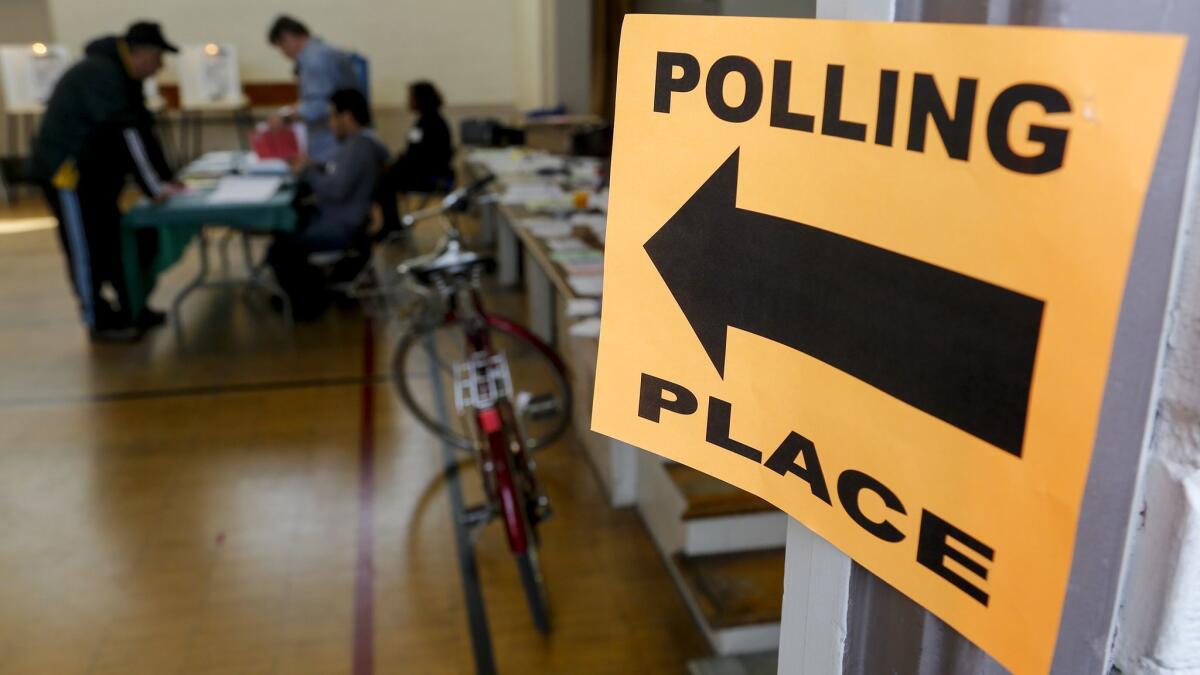
- Share via
OK. You’re registered, and election day is almost here. Now what?
For first-time voters, the prospect of heading to the polls can seem a little daunting. A recent New York magazine article made waves online when young people gave their reasons for not voting, including “it makes me anxious,” “I don’t know where to buy stamps” and “I just don’t know how.”
A lot of it seemed to boil down to confusion and apprehension.
“People are intimidated by things they don’t know,” said Jeanette Senecal, the senior director of mission impact at the League of Women Voters. “People don’t want to look stupid. They don’t want to look like they don’t know what they’re doing. And when you actually recognize and appreciate how important voting is, and you’re concerned that messing it up will have a very significant impact, you can understand why people shy away from it.”
All of that is true. So, for you first-time voters, here’s your guide that will demystify the process.
Can I still vote if I didn’t register in time?
Yes. California passed legislation that allows same-day voter registration even if you missed the deadline to do it online. It’s called conditional voter registration. You have to find your county’s election office, go there and cast a provisional ballot, which will be counted once your registration is verified. Here’s where to find yours.
How do I send a mail-in ballot?
If you’re doing a mail-in ballot, it has to be postmarked by election day, which means you need to drop it in the mailbox on Nov. 6 at the latest, and in time for it be collected that day. If you need stamps, you can buy them at the post office, and most grocery stores and drugstores also have them — just ask the cashier when you’re checking out. That won’t be a concern much longer: California is in the process of phasing out having to use a stamp at all.
You can also drop off your mail-in ballot at a polling place if you’re concerned you didn’t mail it in time. In either case, your vote will count.
“There is a rumor out there that elections aren’t necessarily going to be counting absentee ballots or provisional ballots if the election’s not close,” said Jen Tolentino, the director of policy and civic tech at Rock the Vote. “That’s 100% untrue; every single ballot is always counted.”
If you requested a mail-in ballot but changed your mind after you filled it out, or decided you’d rather vote in person, you can still go to your polling place. Just bring your ballot and trade it for a fresh one when you get there. Here’s more information on how to do that.
It’s too late to request a mail-in ballot for this election if you don’t already have one, but here’s how to do it in the future, including how to register as a permanent mail-in ballot voter.
Where do I go to vote?
If you’re planning to vote in person, you need to find your polling place — the location where you physically go to cast your vote. If you’re voting in L.A. County, you can find it here. If you’re somewhere else in California, look here. It might be a school, or a government building, or a community center, or something more unusual (past polling places in L.A. have included a lifeguard station in Venice Beach and a furniture store in Silver Lake).
Decide in advance what time of day you’ll go and how you’ll get there. You could even stop by ahead of time to scope things out, Senecal suggested, especially if it’s an early voting location.
Polls in California open at 7 a.m. and close at 8 p.m. As long as you’re in line by 8 that night, you will be allowed to cast your vote.
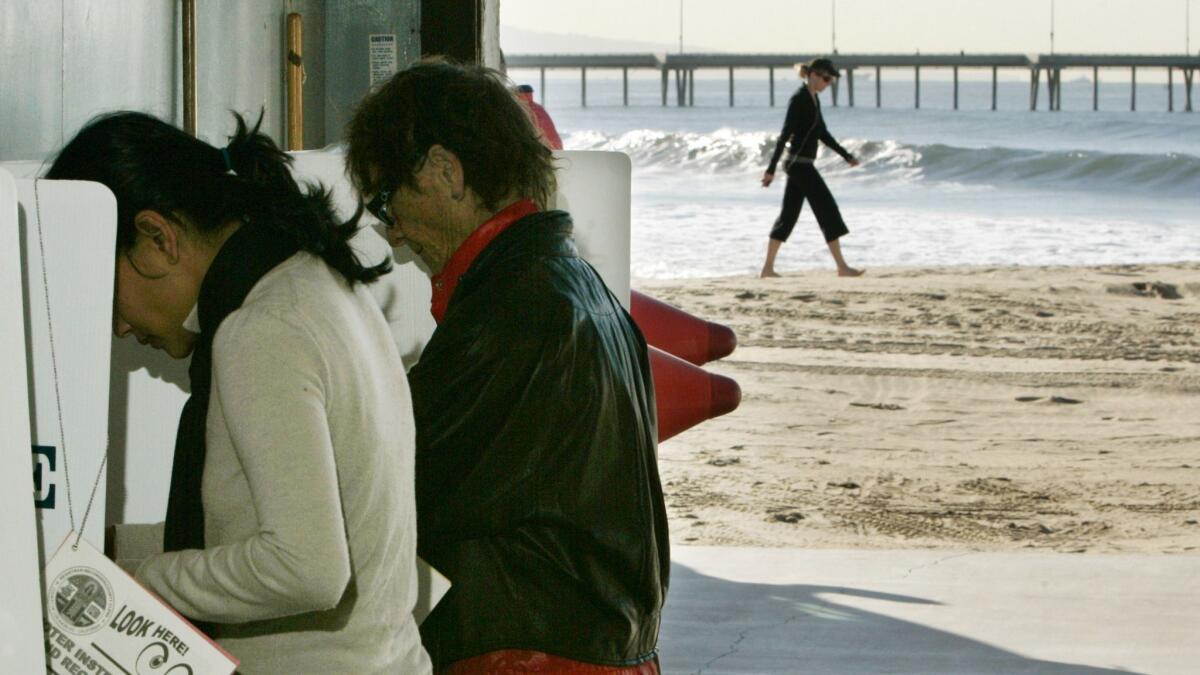
What do I need to bring with me to the polls?
If you’ve never voted before and you didn’t provide ID with your registration, you’ll need to show your driver’s license or other photo ID. If you’ve voted before, you can show up with nothing at all. You are allowed to bring your phone, your sample ballot, and notes with you when you vote, so don’t worry about memorizing anything ahead of time.
What happens when I get to my polling location?
Wherever your polling place is, there will be lots and lots of big signs directing you to where you’re supposed to go. It will be clearly marked.
Once you get to the right spot, you may have to wait in line for 10 to 15 minutes, especially if you go during peak hours right before and after the workday starts. There may be more than one table with people in line. You can ask a poll worker which one you’re supposed to go to.
Once you get to the front of the line, a poll worker will greet you. If you’re a first-time voter, you’ll need your ID; otherwise, the poll worker will ask your name and address and have you sign in on their list. Then they’ll give you a ballot and direct you to where you’re supposed to go to fill it out.
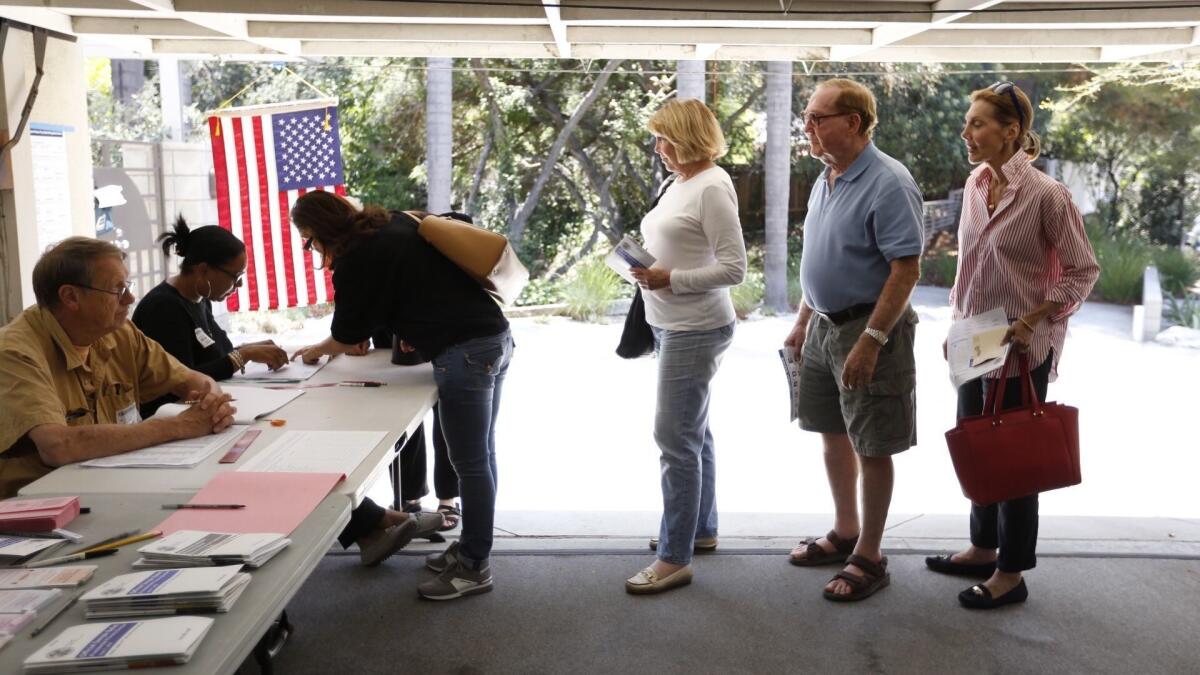
What if I go there and I’m not on the list?
The poll worker will help you. They can look up if you’re registered to vote in a different location. You can also request a provisional ballot, which you’ll fill out the same way as a normal ballot. Request a receipt for your provisional ballot and check back a few days later to make sure it was counted.
How do I actually vote?
California uses paper ballots. After you get your ballot from the poll worker, you’ll be directed to a small booth or other voting station where you can privately fill it out. No one else will see who you’re voting for.
You can take as much time as you need once you’re there, and you’re welcome to consult your phone, the sample ballot you got in the mail, or any notes you brought with you. If you screw something up or change your mind after you’ve filled it out, you can go back to the poll worker and request a fresh ballot.
After you fill it out, bring it back to the poll worker, who will put it in a machine. If something’s wrong – for instance, if you voted for two candidates in a race where you had to pick one – the machine will reject it and you may have to fill it out again.
Critically, this is the point at which you’ll receive your “I Voted” sticker. Instagram it with pride.
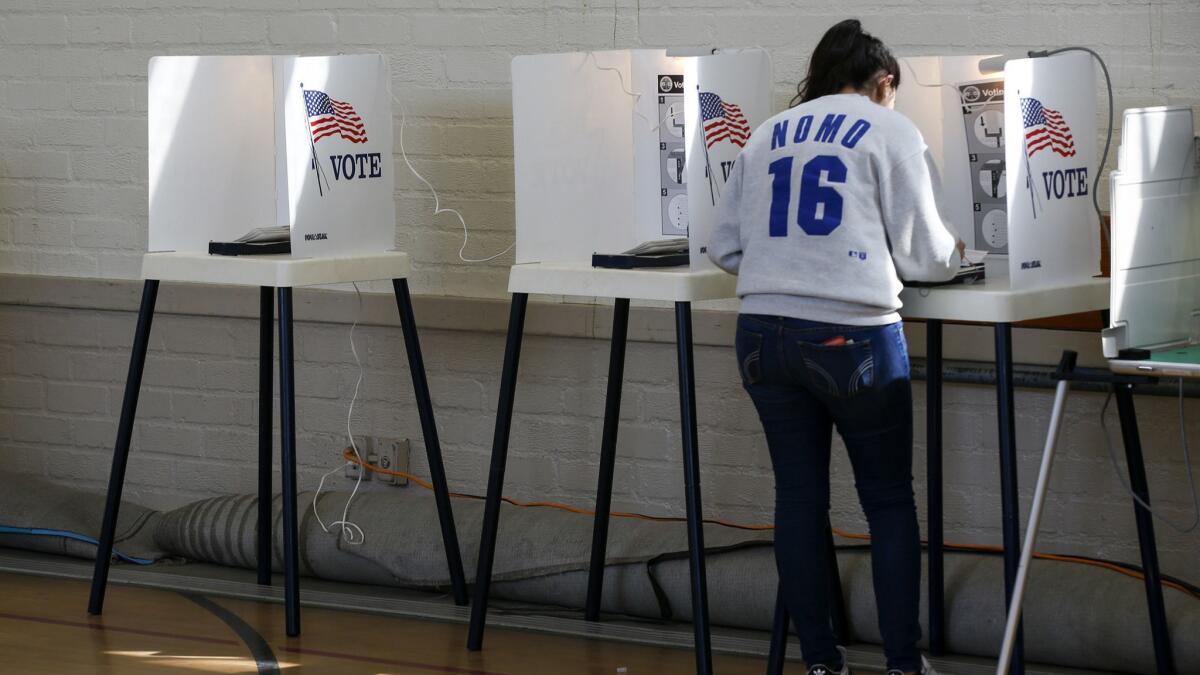
Do I have to vote in every race?
No. If you feel strongly about some candidates or propositions but not others, you can opt to leave some races blank. That’s known as under-voting. When you turn in your ballot, the machine might flag that you left some parts blank, and the poll worker will double-check that you meant to do that. You can say, “Yes, I did,” and the rest of your votes will be counted normally.
How do I know who and what to vote for?
In California, we’re voting for governor, a wide range of state-level offices, and 12 statewide ballot propositions. On top of that, you probably have some city and county races and measures, and congressional races. It’s a lot to take in.
There are a few different ways to research how you’ll vote. If you’re a registered voter, you received a sample ballot in the mail that has information on all the propositions and races you’ll be voting on. The League of Women Voters has VotersEdge.org, which also has lots of information on everything on the ballot in California. Rock the Vote lays out what every office you’re voting on does, as well as what the ballot measures would do. Our California politics team put together a closer look at the statewide ballot propositions. And you can read about the close congressional races that could determine which political party will control the House of Representatives. Our Decision California page has all The Times’ coverage.
You can also look at voter guides and endorsements from a group you trust or that aligns with your political views. Here’s a sampling:
The Los Angeles Times editorial board endorsements
Sacramento Bee editorial board endorsements
San Francisco Chronicle editorial board endorsements
California Democratic Party endorsements
California Republican Party endorsements
Courage Campaign’s California Progressive voter guide
Libertarian Party of California voter guide
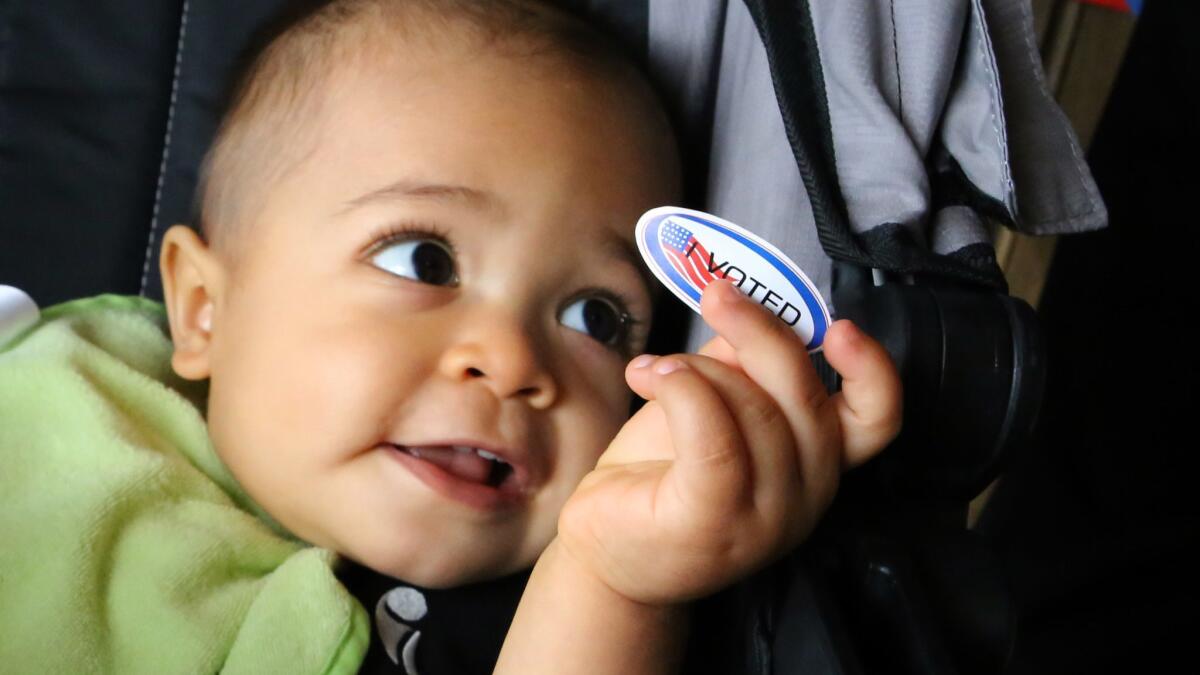
How can I make sure my kids vote?
Statistically, the best way to make sure your kids become voters is to take them with you when you vote, Senecal said.
“They see their parents do it, they see how easy it is,” she said. “In a sense they’re not a first-time voter [as an adult], because they see what the process is like.”
California allows young people to pre-register to vote at 16, which means they will be fully registered voters once they turn 18. If they register through Rock the Vote, they’ll be emailed a reminder when they turn 18, Tolentino said.
Why should I vote?
Voting is an important part of the Democratic process. It will be rare that you have an election where you’re 100% excited or certain about every single measure and candidate. But not voting doesn’t accomplish anything, other than making sure your voice isn’t heard on the issues that matter to you locally and statewide.
“Voting is the most impactful way for you to make change that you want to see happen, both in our country and in our communities,” Tolentino said.
Senecal agreed: “Voting is the one time that everyone is equal. Everyone’s voice counts the same and you get to set the direction of our country. You’re making a decision for your community’s future.”
Nationwide, barely one in three eligible voters hit the polls in the last midterm election – the lowest in 70 years. According to CNN exit polls, people 18-29 only made up 13% of that already abysmally low number of voters. Based on the enthusiasm for early voting this year, it seems like turnout will be better, but the only way to contribute to that is to show up at the polls.
ALSO:
The complete list of L.A. Times endorsements for the November 6 election
The good, the bad and the egg-laying hens: Here’s how you should vote on the ballot propositions
More to Read
Get the L.A. Times Politics newsletter
Deeply reported insights into legislation, politics and policy from Sacramento, Washington and beyond. In your inbox three times per week.
You may occasionally receive promotional content from the Los Angeles Times.








